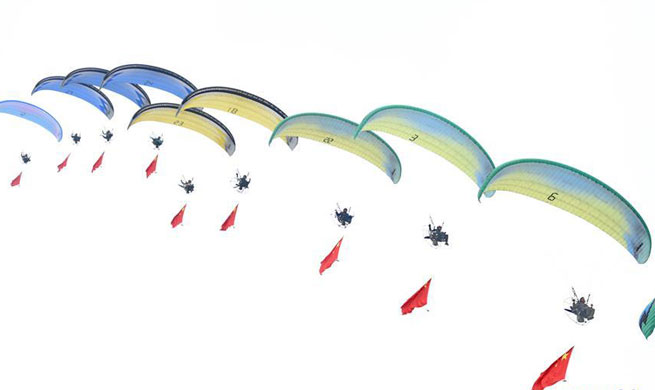NANJING, May 2 (Xinhua) -- Chinese archeologists have discovered lacewing larvae around 100 million years old preserved in Cretaceous amber.
In the amber unearthed from northern Myanmar, green lacewing larvae anatomically modified themselves to mimic coeval liverwort to camouflage themselves and evade predators. However, no lacewing larvae today mimic their surroundings.
The paper of the finding made by a Sino-U.S. science team was published on the latest issue of the international science journal, Current Biology.
Wang Bo, a member of the team and a researcher from the State Key Laboratory of Palaeobiology and Stratigraphy based in Nanjing, capital of east China's Jiangsu Province, said liverworts are among the earliest terrestrial plants. The discovery is the first record of liverwort mimicry by insects.
The research joined by the China Agriculture University and the University of Kansas was supported by both China National Natural Science Foundation and the U.S. National Science Foundation.
Wang said the fossil demonstrates a camouflaging ancestor, which did not pass on the trait within the lineage.

















